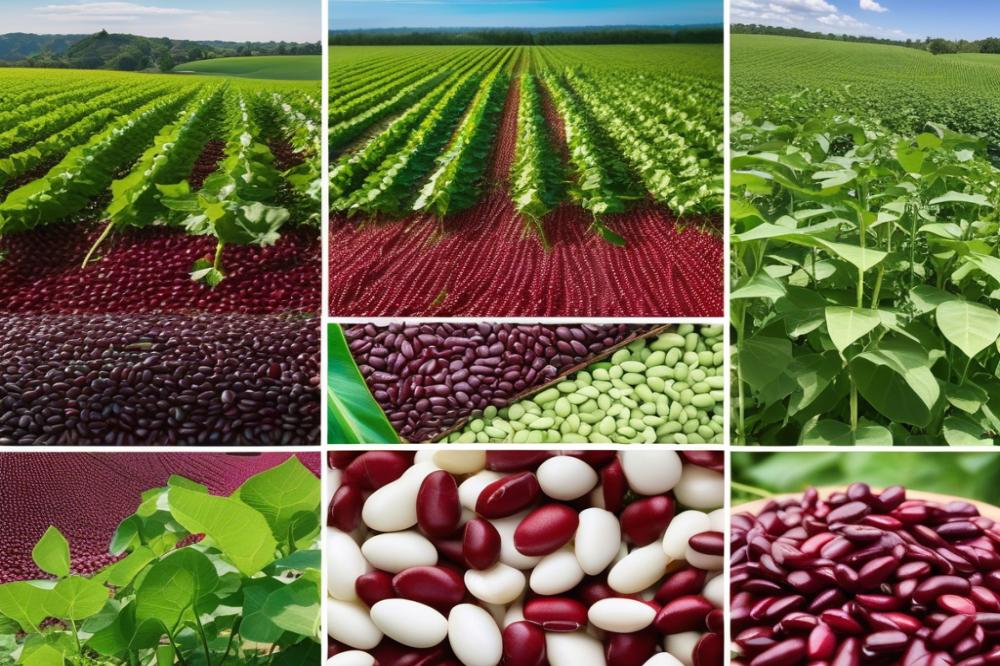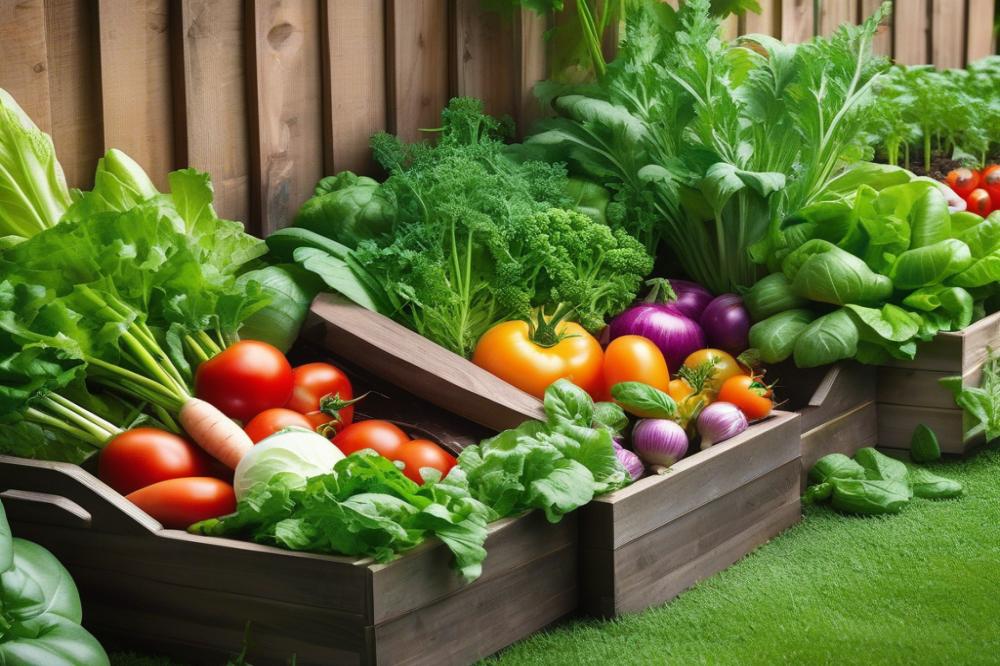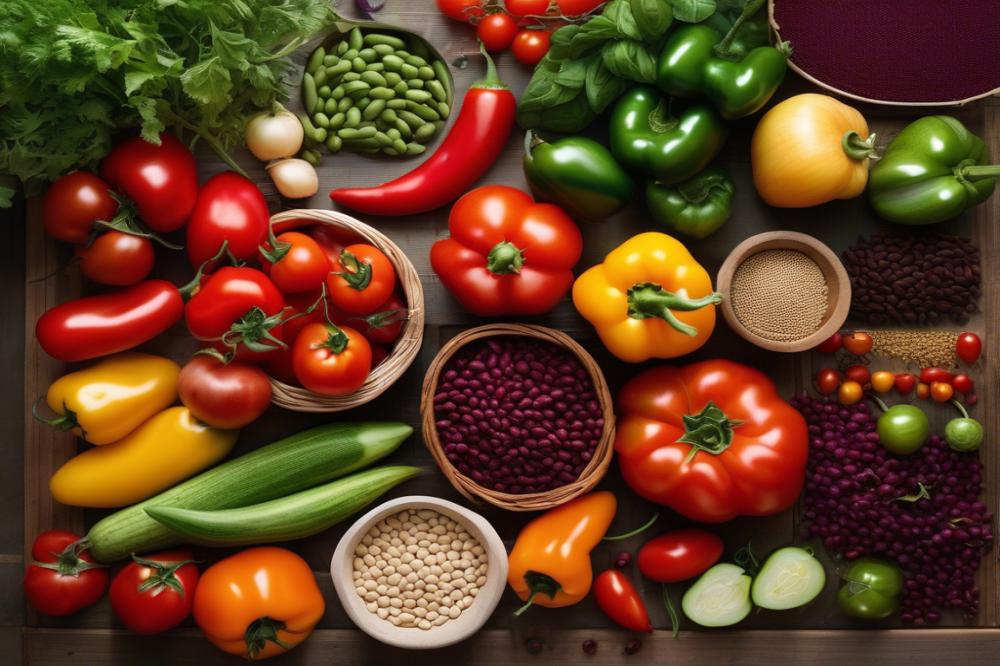How to cultivate kidney beans for a high-yield harvest
Kidney beans are a popular legume enjoyed by many around the globe. These beans are a staple in countless dishes, from chili to salads. Beyond their delicious taste, kidney beans play a significant role in food security. They are easy to grow and provide an affordable protein source for individuals and families.
growing kidney beans is not only beneficial for those who consume them. The act of bean planting fosters healthier soil. Planting beans contributes to nitrogen fixation, which improves soil quality for future crops. This natural process is vital for sustainable farming and crop rotation practices. As a result, cultivating kidney beans can increase the overall productivity of your garden.
Nutrition is another aspect to consider. Kidney beans are rich in protein, fiber, and essential vitamins. Including them in your diet can lead to numerous health benefits. These beans can help in weight management and support digestive health. Their versatility in cooking makes them an ideal ingredient for various diets.
When embarking on your journey to cultivate kidney beans, remember to focus on pest management. Keeping pests at bay is crucial for achieving a high-yield harvest. Regular monitoring of plants and using natural deterrents can help maintain a healthy crop. Furthermore, adequate watering kidney beans and proper sunlight requirements will promote vigorous growth and development.
Different bean varieties offer various tastes and textures. Experimenting with these can enhance your culinary experience. In summary, cultivating kidney beans not only feeds the body but also enriches the soil, supporting the environment. With the right techniques, anyone can enjoy a successful gardening adventure.
How to Cultivate Kidney Beans


Basic Requirements for growing kidney beans
Growing kidney beans starts with understanding their basic needs. These plants thrive in well-drained soil with a pH level between 6.0 and 7.0. Soil preparation is crucial. It should be enriched with organic matter like compost to boost fertility. A sunny location is vital, as they require plenty of light—ideally, at least six to eight hours a day. Attention to watering kidney beans is important too. They prefer consistent moisture, but be careful not to overwater. Excessive water can lead to root rot.
Selection of Suitable Bean Varieties for Different Climates
Choosing the right bean varieties plays a significant role in successful cultivation. Various types of kidney beans exist, each adapting uniquely to climate conditions. For warmer areas, red kidney beans can be an excellent choice due to their heat tolerance. Alternatively, in cooler zones, look for varieties that mature quickly. Recognizing your local climate will guide your selection. Understanding these differences will contribute to a fruitful harvest.
Importance of bean planting techniques
Implementing effective bean planting techniques is essential for achieving high yields. Plant seeds about an inch deep, spaced several inches apart. This allows adequate airflow for the plants. Following the idea of crop rotation can benefit the soil. Avoid planting beans in the same spot year after year. Like many crops, kidney beans can attract pests. Applying pest management strategies early on can minimize damage and keep plants healthy.
Nutrition for kidney beans is also a pivotal aspect to consider. Incorporating fertilizers that are high in potassium will support growth. Regularly monitoring soil fertility will help maintain plant health throughout the season. Keeping these elements in mind can make a significant difference in your harvesting results. Be ready for that rewarding harvest time when pods are firm and fully developed.
Soil Preparation


Ideal Soil Conditions for Kidney Beans
Growing kidney beans begins with the right soil conditions. These plants thrive in well-drained, fertile soil. Sandy loam is often a favorite among bean growers. This type of soil offers a balance of drainage and moisture retention. Compacted, heavy clay soils can hinder root development and grant poor yields. Aim for a soil texture that allows roots to breathe and access nutrients efficiently.
Techniques for Soil Testing and Amendment
Before planting, it’s wise to test your soil. Home testing kits are widely available and provide crucial information. They can indicate nutrient levels, pH, and organic matter content. Furthermore, know that amending soil can greatly enhance growth. Adding compost enriches the soil with beneficial microorganisms. Lime can increase pH if your soil is overly acidic. Alternatively, sulfur can help lower pH for those rare alkaline soils.
Recommended pH Levels and Nutrient Content
The ideal pH level for kidney beans ranges from 6.0 to 7.0. Maintaining this range promotes optimal nutrient absorption. Low pH can lead to nutrient deficiencies, affecting plant health. Regularly monitor nutrient content, focusing on nitrogen, phosphorus, and potassium. A balanced nutrient mix supports robust growth during the growing kidney beans phase. Crop rotation with legumes can naturally enhance soil fertility. By following these guidelines, you can set the stage for a successful harvest time.
Nutrition for Kidney Beans


To achieve a high yield when growing kidney beans, certain essential nutrients play a key role. Nitrogen, phosphorus, and potassium stand out as critical for optimal growth. Just like humans, plants require a balanced diet. Nitrogen promotes healthy leaf growth, while phosphorus supports root development. Potassium enhances overall plant health and helps beans resist diseases.
Fertilization methods come in two main types: organic and synthetic. Organic sources include compost, well-rotted manure, and various plant-based fertilizers. These options often improve soil structure and promote beneficial microbes. Synthetic fertilizers, on the other hand, provide quick access to nutrients. Their application can be efficient, but careful monitoring is crucial to avoid nutrient burn or soil depletion.
Timing of fertilizer application significantly affects bean growth. Soil preparation should include testing nutrient levels before planting begins. Once the soil is ready, farmers often add fertilizers either at planting or just after seedlings emerge. This strategy gives young plants the nutrition they need right from the start. Applying fertilizers during the flowering stage can further boost pod development. Adjusting amounts depending on bean varieties is also a wise decision.
Watering kidney beans must be balanced with nutrient needs. Overwatering can wash away vital nutrients, while insufficient moisture can hinder nutrient uptake. Combining proper watering techniques with timely fertilization creates an optimal environment for growth. Crop rotation can also influence nutrient levels in the soil. This practice helps maintain soil health and prevents nutrient depletion for future plantings.
Pest management strategies should accompany nutrition plans. A well-fed plant is more resilient to pests and diseases. Therefore, monitoring both nutrient levels and pest populations can improve overall health. Achieving a high yield involves attentive care from planting to harvest time. Using effective bean planting techniques can also enhance productivity while minimizing challenges.
Sunlight requirements should coincide with nutrient needs. Kidney beans thrive in full sun, which supports robust growth. Ensuring that plants receive adequate sunlight also aids in nutrient absorption. When selecting bean varieties, consider their specific nutrient requirements and growth conditions. Matching the right variety with proper nutrition will lead to impressive harvest results.
Watering Kidney Beans


Water plays a critical role in growing kidney beans. Different growth stages have unique watering needs. Seedlings require consistent moisture. Once they are well established, watering can be reduced but still should be deep and infrequent. During flowering and pod development, demand for water increases again. This is when plants are forming the beans, so keeping the soil damp is essential.
Techniques for Efficient Irrigation
Using drip irrigation is effective for bean planting techniques. This method delivers water directly to the roots. Rainwater harvesting can also be sustainable and efficient. It reduces reliance on municipal water. Sprinklers might work, but they can wet the foliage too much. Wet leaves can lead to fungal diseases. Mulching between rows can help retain soil moisture and reduce evaporation.
Signs of Overwatering and Underwatering
Finding the right balance is crucial. Overwatering can lead to root rot, which is a common problem. Yellowing leaves are typical signs of this issue. Check the soil; if it feels soggy, halt watering. Conversely, underwatering is just as detrimental. Signs include wilting and dry soil. When the leaves curl or turn brown at the edges, it’s time to provide more water. Monitoring the plants frequently helps catch these issues early.
Irrigation practices should adapt to the weather. During hot spells, increased watering may be necessary. On the other hand, rainy periods might warrant a pause in watering. Always consider the growth stage of the kidney beans. Ultimately, maintaining proper hydration leads to robust growth and a fruitful harvest.
Sunlight Requirements
Sunlight plays a critical role in the growth of kidney beans. Healthy plants need ample exposure to thrive and produce a bountiful yield. Without enough light, plants may become weak, affecting their overall development and productivity.
It’s generally recommended that kidney beans receive at least six hours of direct sunlight each day. This consistent light exposure helps promote healthy leaf and pod development. If a garden has a spot that gets good light, that is where you want to plant.
Planting kidney beans in shaded areas might be necessary due to space constraints. Using certain bean planting techniques can help maximize potential yields in such situations. For example, consider using reflective surfaces, such as white mulch, to bounce light onto plants. Additionally, placing taller crops on the north side of the garden can prevent shading the beans.
When growing kidney beans in shadier conditions, monitoring soil moisture becomes more crucial. Lack of sunlight can lead to slower growth and increased vulnerability to pests. Therefore, implementing effective pest management strategies is vital to protect your plants.
During the early planting stages, it’s essential to prepare the soil adequately. Incorporate organic matter to improve drainage and fertility. Furthermore, check the nutrient levels to support the robust growth of these beans.
Remember, sunlight is not just about light; it influences the entire growing cycle. It affects everything from nutrition for kidney beans to the timing of your harvest. When it comes to crop rotation, plan to give light requirements priority to maximize yield.
Different bean varieties may respond differently to varying light conditions. So, knowing your specific type can guide you in choosing the best location for planting. Overall, a good understanding of sunlight needs is fundamental to successful kidney bean cultivation.
Pest Management
Common Pests that Affect Kidney Beans
Growing kidney beans can attract several pests. Aphids are tiny insects that suck sap from the plants. They can stunt growth and transmit diseases. Additionally, spider mites may appear in dusty conditions. These pests create fine webs and weaken crops. Cutworms, which are larvae of moths, can also damage seedlings. They cut the stems at the soil level, causing plants to wilt. Furthermore, leafhoppers and beetles can harm bean leaves and pods. Identifying these pests early is crucial for a successful harvest.
Integrated Pest Management Strategies
Using integrated pest management (IPM) can be beneficial. Start by monitoring plants regularly. Inspect the leaves and stems for signs of pest activity. If you notice any trouble, act quickly. Crop rotation is another effective technique. Rotating bean varieties helps disrupt pest life cycles. Planting companion plants can deter pests naturally. Marigolds, for example, repel certain insects. Additionally, maintaining healthy soil preparation promotes robust plants. Strong plants are less likely to suffer damage from pests.
Organic and Chemical Pest Control Methods
Organic methods offer a safer approach to pest control. Insecticidal soaps can help eliminate soft-bodied insects. Neem oil is another option that disrupts pests’ life cycles. Spraying diluted neem oil on leaves can reduce populations. On the other hand, chemical pesticides are quicker but come with risks. Using them requires careful reading of labels and adherence to guidelines. Understanding the specific pests affecting your crop can guide your choice. Always consider the impact on beneficial insects such as pollinators. Smart watering techniques aid in keeping plants vigorous, making them less attractive to pests.
Pest management is vital for maximizing the potential of your kidney bean crop. Focusing on prevention and prompt action can lead to a bountiful harvest.
Harvest Time
Signs That Kidney Beans Are Ready for Harvest
Kidney beans indicate readiness for harvest when their pods turn a light brown color. Dried pods feel crisp and brittle, which is another clear signal. A quick check can confirm maturity; shake the plant gently. Listen for rattling sounds from the seeds inside the pods. Additionally, leaves will start to yellow. This is an important sign that beans are reaching their peak.
Best Practices for Harvesting
Timing plays a crucial role in the harvesting process. Aim for a dry day to harvest the beans. Wet conditions can complicate matters, leading to potential mold issues. Use garden shears or scissors to cut the pods from the stalk. Avoid pulling on the plants, as this can damage others nearby. Gather the pods carefully in a container, ensuring they don’t get crushed.
Post-Harvest Handling and Storage
After gathering, it’s essential to handle the beans properly. Spread the harvested pods out on a flat surface in a dry area. Allow them to air out for several days before further processing. Once dried, open the pods to extract the beans. Store them in a cool, dark place. Use airtight containers to keep moisture at bay. This method helps maintain quality and prolongs lifespan. Regularly check storage areas to prevent pest infestations. Following these steps aids in preserving the harvest effectively.
Crop Rotation
Crop rotation is a crucial practice for maintaining soil health. It involves changing the types of crops grown in a specific area over time. This method can replenish nutrients in the soil, reduce pest buildup, and minimize diseases that affect plants. Growing kidney beans, for instance, benefits from this approach as it helps maintain a healthy environment for the plants. Rotating crops like corn or grains with legumes like beans can enhance soil fertility due to their nitrogen-fixing ability.
Companion planting can also significantly support the growth of kidney beans. Certain plants can protect or enhance growth when planted nearby. For instance, planting marigolds alongside beans can deter harmful pests. Likewise, corn functions as a natural support for climbing bean varieties. This synergy between plants maximizes garden space and promotes a healthier ecosystem.
Planning rotation cycles requires careful consideration. Keeping track of what was planted where in previous seasons is essential. A simple notebook or garden plan can help maintain this information. Varying bean planting techniques each year also raises the overall yield. Consider using different varieties of beans to enrich the soil in different ways. Following a four-year cycle can help establish a beneficial routine. For example, when kidney beans are followed by leafy greens, it promotes a rich source of nutrients.
When thinking about crop rotation, always consider the specific nutritional needs of each plant. Kidney beans thrive when they are not competing with similar crops for nutrients. Additionally, effective pest management strategies should also be incorporated into the rotation planning. Rotating with plants that attract beneficial insects can naturally control pests. Watering kidney beans adequately is vital, but so is ensuring the soil has enough diverse organic matter. Soil preparation before planting can enhance the benefits of crop rotation.
Finally, remember that kidney beans enjoy full sunlight. This appreciation for light means rotating with shade-tolerant plants can provide a balance in the garden. Knowing when to harvest is another key aspect. Each plant has its own harvest time, and understanding this helps in planning your rotation effectively. With a thoughtful approach to crop rotation, cultivating kidney beans can lead to higher yields.
Final Thoughts on Cultivating Kidney Beans for a High-Yield Harvest
Recap the essential steps for a successful harvest. Start with selecting the right variety of kidney beans that suits your climate and soil. Prepare the garden bed by enriching the soil with compost or fertilizers. Timing your planting is critical; wait until the soil temperature is warm enough. Use effective bean planting techniques to maximize growth potential. Don’t forget to provide proper support for the plants as they climb.
Motivation is key. Implementing these best practices can lead to impressive yields. Regularly check for pests and diseases to maintain plant health. Finally, water appropriately and consistently without overdoing it. These small steps pave the way for a successful harvest, rewarding your efforts with bountiful beans.
Sustainability plays a large role in growing kidney beans. Home cultivation reduces the carbon footprint and provides access to nutritious food. Enjoying the fruits of your labor not only boosts satisfaction but also promotes healthier eating. Remember, watching your kidney beans flourish can be a joyful experience. Get started today, and you may find more benefits than you ever expected.



